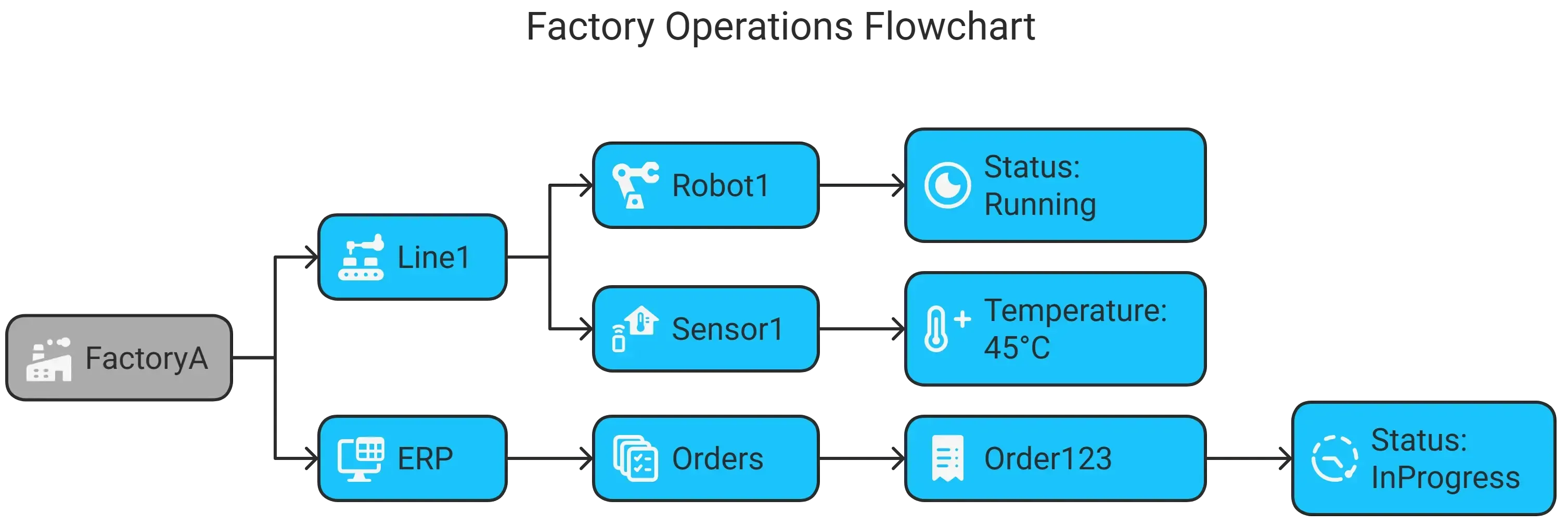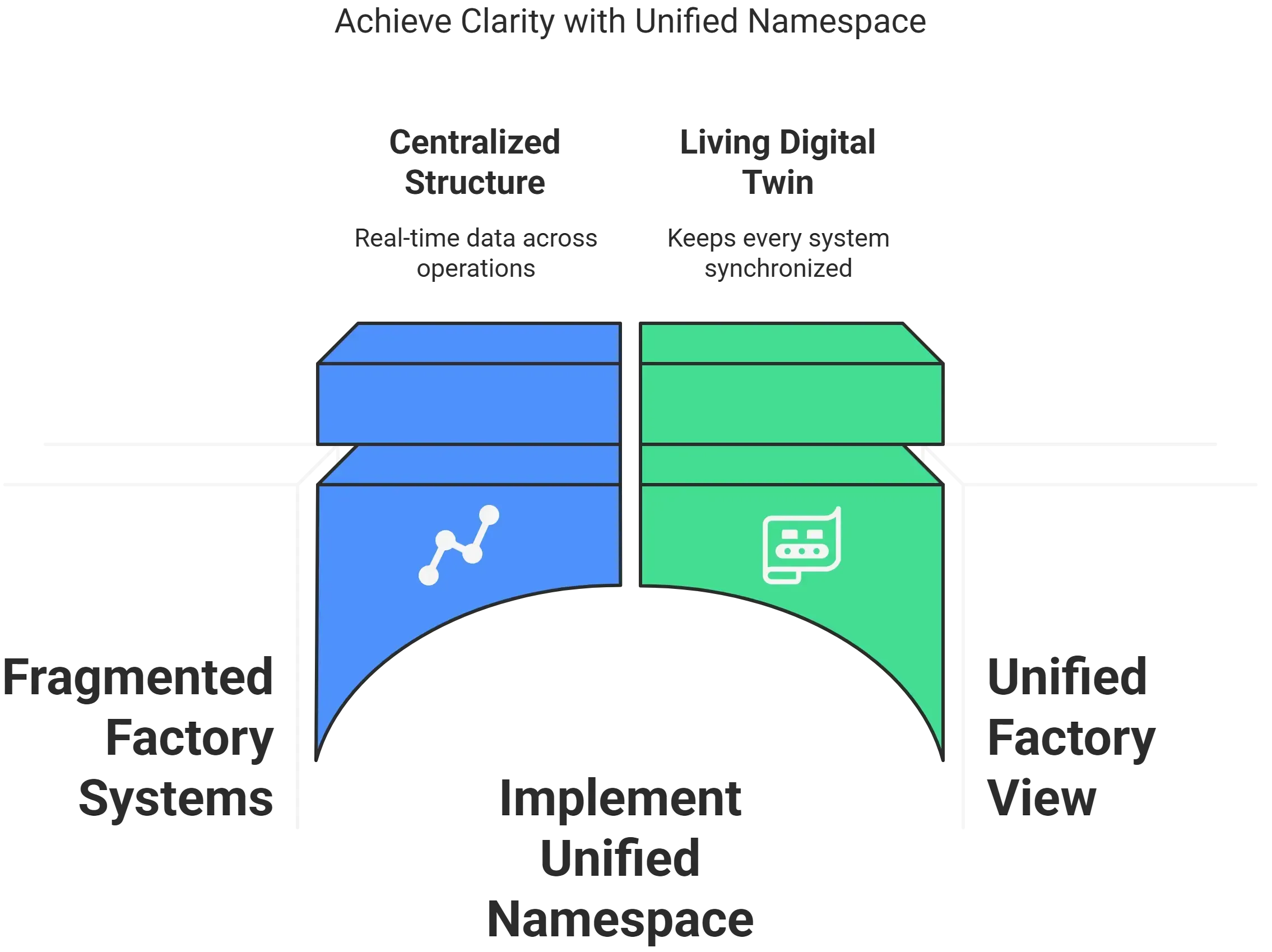What is a Unified Namespace and Why It Matters
A Unified Namespace (UNS) is a modern way to organize data in manufacturing — one that cuts through the chaos of disconnected systems and gives you a real-time, single source of truth across your entire operation.
Instead of wiring machines, SCADA, MES, ERP, and analytics platforms together one by one, UNS brings everything into a shared structure. Every system simply publishes what it knows and subscribes to what it needs — no complex integrations, no custom connectors everywhere.
And here's the key: UNS isn't a product or a protocol. It's an architectural approach — a way of thinking about how data should move, where it should live, and how teams and systems should access it.
What does that unlock?
- A live, accurate view of everything happening on the shop floor
- Cleaner, faster system integrations (and fewer headaches for IT)
- A scalable foundation for Industry 4.0 and digital transformation
- Quicker, better decisions — backed by consistent data

How Does a Unified Namespace Actually Work?
Let’s break it down without the jargon.
A Unified Namespace (UNS) works like a shared live feed of everything happening in your factory. Instead of each machine or system storing data in its own corner — and needing custom code to talk to others — they all drop their updates into one common space, in real time.
This common space is usually powered by a lightweight messaging system like MQTT, where data is organized in a way that mirrors your factory layout. Imagine folders inside folders — but instead of static files, each folder holds live, streaming data. Something like this:

Every device and app simply publishes what it knows. Other systems that care about that info can subscribe to those updates — whether it’s your MES, SCADA, analytics platform, or a dashboard.
The best part?
- Systems don’t have to know about each other.
- You don’t need to build spaghetti-code integrations.
- Everything stays modular, clean, and scalable.
So when a new machine comes online or a new app needs data, you just plug it into the namespace — no need to rebuild your architecture.
In short, UNS works like a real-time, always-on bulletin board where every piece of your factory updates its status — and anyone who needs it can see it, instantly.
Why Manufacturers Are Moving to Unified Namespace
For years, manufacturers have relied on legacy systems and custom-built integrations to keep things running. And to be fair — they’ve worked. But as factories grow more complex, with more machines, more sensors, and more software systems, those patchwork solutions start to show their limits.
That’s where Unified Namespace is making a difference.
Instead of building a new integration every time a system changes or a new device comes online, UNS offers a a more streamlined approach— a central layer where all your systems can connect, communicate, and stay in sync. It acts like the nervous system of your factory, constantly updating, sharing, and reacting to real-time events.
This shift isn’t just about being “modern.” It’s about being ready — ready to respond, adapt, and scale.
Here’s what UNS makes possible:
- Dashboards that reflect what’s happening right now — not 6 hours ago
- Automated actions when machines stop, quality drops, or thresholds are crossed
- Faster decisions with less back-and-forth between teams and tools
- Data that flows freely between departments, systems, or even across multiple sites
Manufacturers are choosing UNS not because it’s the latest buzzword — but because it reduces friction, cuts down complexity, and creates a foundation they can build on for years to come.

Final Thoughts
Unified Namespace isn’t just another tool to add to the stack — it’s a shift in how we think about industrial data. Instead of juggling disconnected systems and endless integrations, UNS offers a single, shared space where everything stays in sync, automatically. It helps factories go from playing catch-up to staying ahead — from scattered to connected.
This is just the beginning. In upcoming blogs, we’ll go deeper into how to actually structure your namespace, stories from real factories making the shift, and how you can begin — no matter where you are today.
